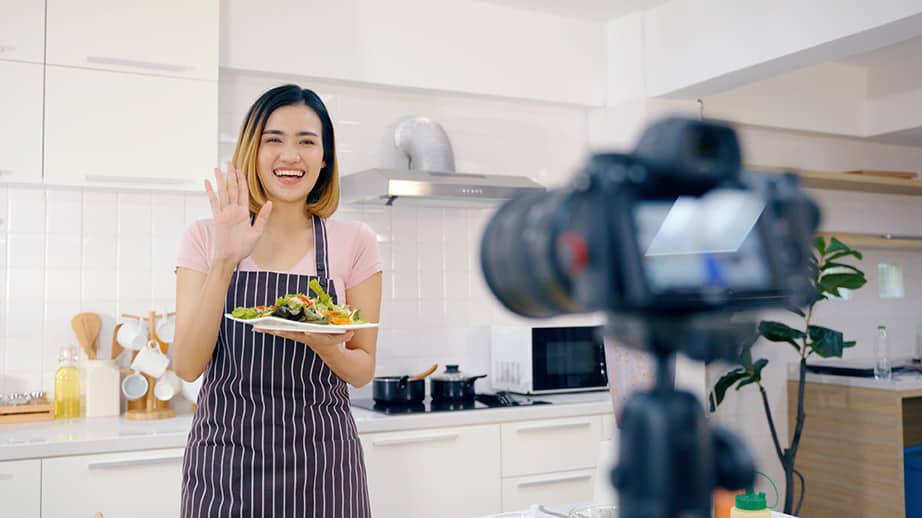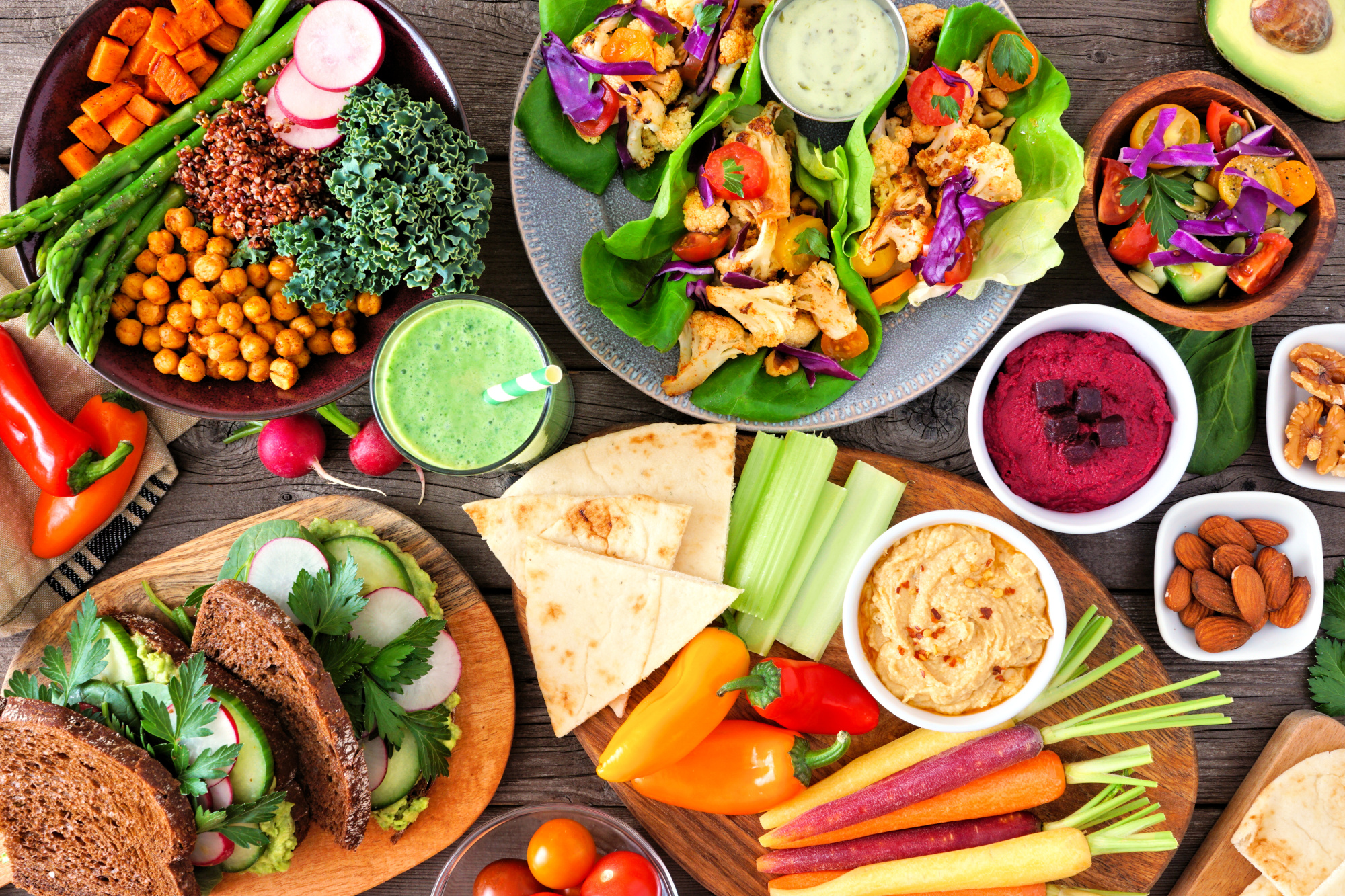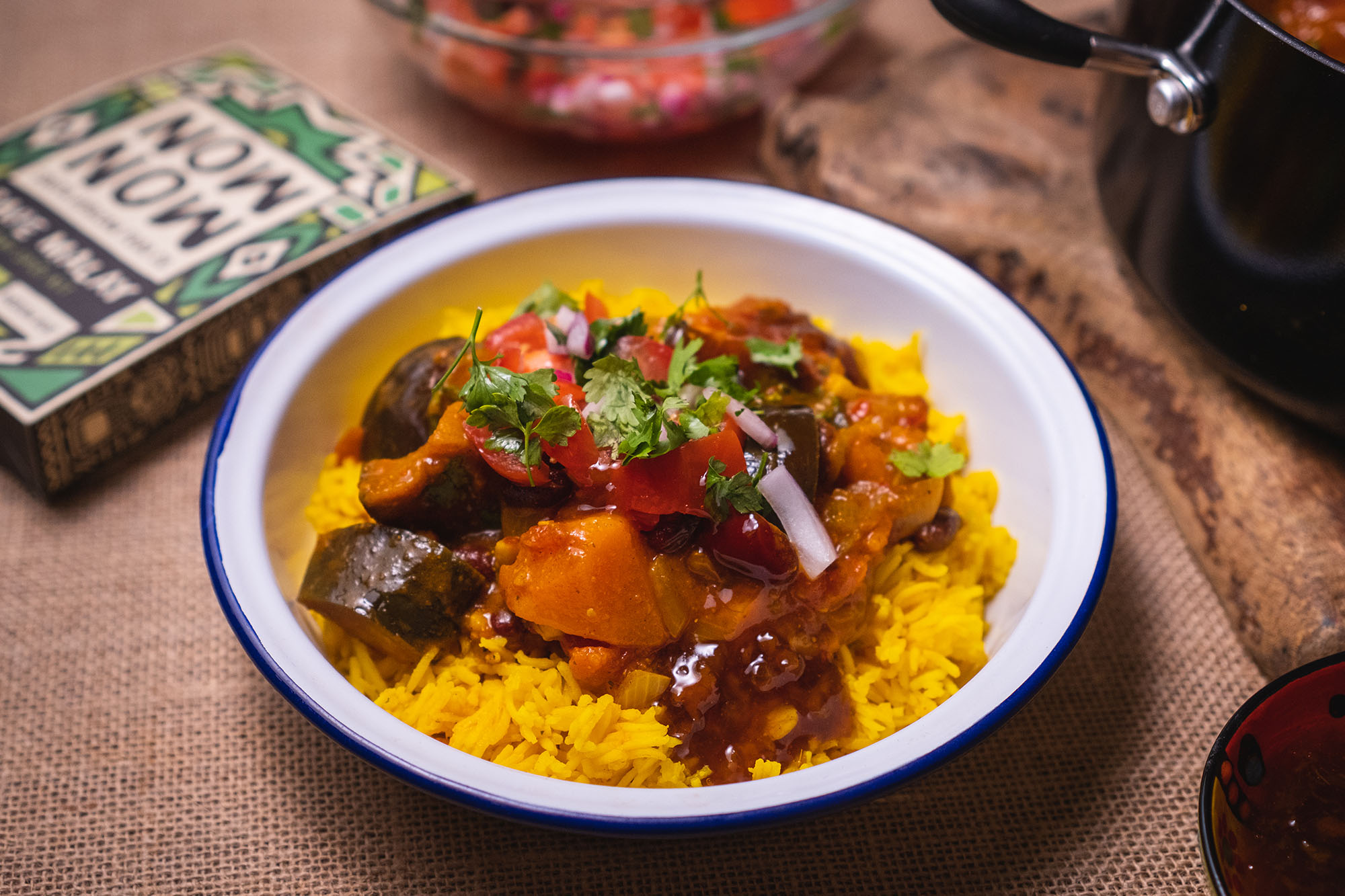Executive Summary
Connecting with influencers who truly match your brand values is a great way to grow your visibility and expand your reach. Aim to build a meaningful relationship with influencers on social media, then gift them some free products to sample. If you’re a good fit, they’ll spread the word about you to their followers. This opens the door for further collaborations such as creating shared recipes or co-hosted launch events. These efforts will cumulatively grow your brand’s audience and market share – with up to eleven times more impact than conventional social-media advertising.1
Influencer engagement checklist:
- Follow the rockstar vegan influencers (e.g. see this list of top vegan influencers) – a lot of their followers are curious flexitarians.
- Connect with micro-influencers (1,000-5,000 followers). Find them by searching for posts with relevant tags (for instance, lots of micro-influencers attend the UK’s 12,000-strong annual festival #VeganCampout).
- Build a natural, friendly rapport with influencers via their feed. Comment positively on what they’re posting, and start tagging them in relevant posts. If they engage warmly with you in return, send them a private message and offer some free products (with no strings attached).
- If they enjoy your product and shout about it, watch how their followers respond. If they’re excited by your product, look for ways to deepen your relationship with that influencer – for instance, through co-created recipes.
- Level-up your value-add for influencers by inviting them to exclusive events, launches, tastings, and experiences. The more opportunities you give them to experience something incredible, the more likely they are to talk about your brand!
- If they don’t respond, think about why – are you a genuine fit for them? Are you being too pushy without offering them real value? Are you sending them a tailored message based on what you like about their posts, or just copy-pasting? Tweak your strategy if appropriate. If you’re nailing it and they’re still not interested, leave them a courteous open-invitation then move on to your next candidate.
Introduction
Are you looking to increase your brand’s reach? You’re in luck. In this expert guide, we’ll walk you through the key ways that brands like yours can successfully collaborate with influencers in order to drive consumer demand for your plant-based foods. You’ll discover:
- How you can use influencers to reach specific demographics.
- Cost-effective collaboration strategies to maximise your time investment.
- Do’s and Don’ts, including best-practice examples from leading brands.
The Power of Influencers
Word of mouth is the most powerful marketing tool. 92% of consumers believe recommendations from friends, family, and influencers over all other forms of advertising.2 According to McKinsey, word of mouth is responsible for up to 50% of purchase decisions.3 It leverages the innate human desire to connect with people we trust and be part of a chosen ‘in-group’.
Influencers combine trusted word-of-mouth with scale of reach. They’re like your high school cool kid — popular, fun, and powerful allies.

A recent pan-EU survey led by ProVeg International found that almost 40% of EU consumers now identify as either flInfluencers are typically respected as an authority on a specific lifestyle topic. Their authority stems from two crucial ingredients:
- Authentic values and strong interaction. Followers seek like-minded influencers who talk to them like a close friend. With the click of a button, you’re one of the cool kids!
- Independence. Influencers position themselves as neutral, and thus trustworthy. Because they’re unbiased, they’re at liberty to give the real low-down.
In many countries, influencers must declare, by law, any posts that are sponsored – (usually by tagging them with “ad”). Followers can see at a glance when their influencer is acting like a gun for hire. This is actually a huge win for brands who can get promoted without paying their influencers. It’s called gifting, and it really enhances the credibility of an endorsement. Let’s look at some case studies of brands that are smashing it.
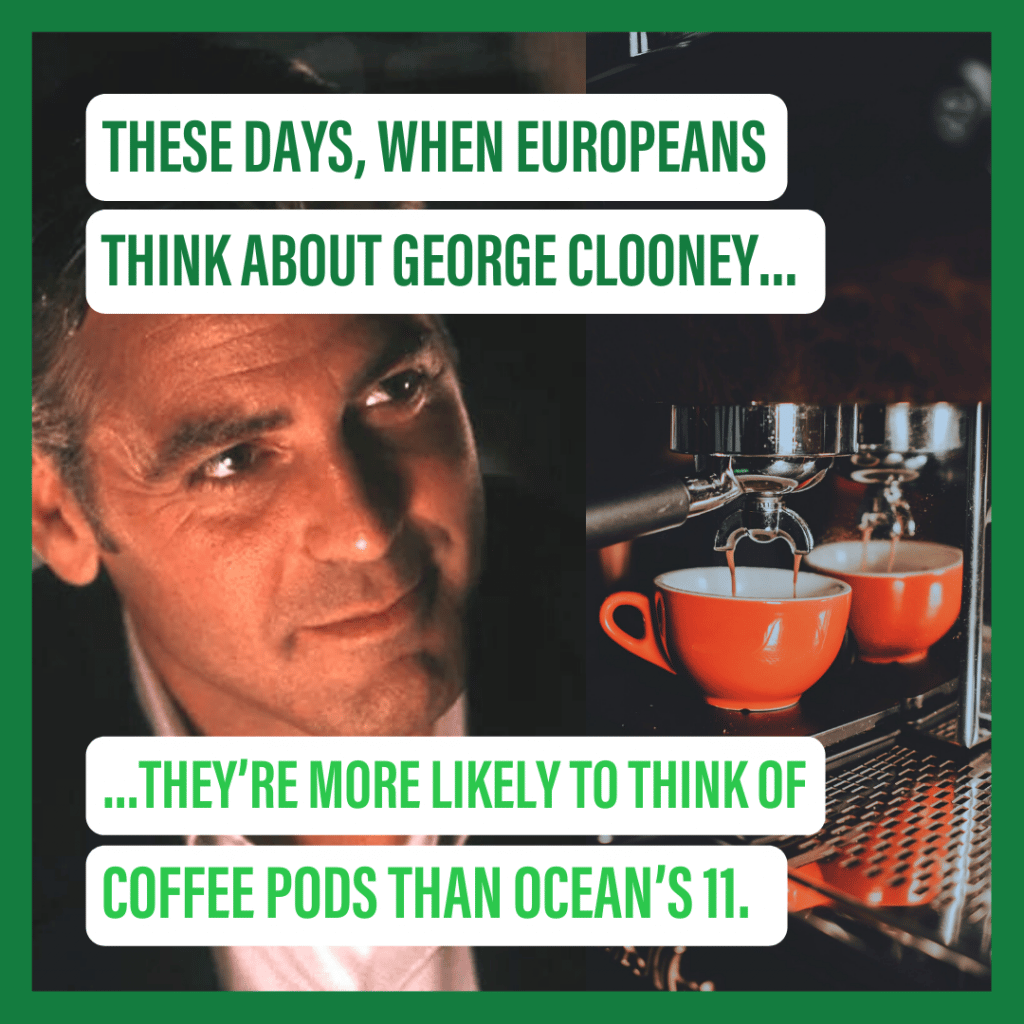
Reasons influencers should be part of your brand strategy:
- According to research by Google, 70% of teenage YouTube subscribers relate to YouTube creators more than traditional celebrities from TV/Film etc.
Food Influencer Score Card
| Influencer Type | Pros | Cons |
|---|---|---|
| Celebrity consumer | Scale of fame and size of following | High price tag Heard to reach |
| Chef | Trusted food expert Local to global audience potential Often looking for new opportunities | Online promotion unlikely to be their priority |
| Influencer (general) | Independent and trusted Dedicated fans Open to gifting | Long lead time and persistence required to build relationship |
| Influencer chefs/foodies (aka the sweet spot) | Super relevant audience Committed to regularly publishing online | The bigger their following, the longer it may take to earn their trust |
The key to effective use of influencers is their ability to cause behaviour.
Jay Baer, NY Times bestselling author and marketing consultant4
Case Study: How Heura grew using influencers
Heura is a popular Spanish plant-based meat brand. They’ve built an audience of more than 160k followers on Instagram since 2017. They position their product as part of a lifestyle movement and invite both followers and influencers to become ‘good rebels’ with them.
Just like Impossible Foods, Heura builds sincere relationships with people whose values and activities align with their brand. These people become their brand champions – something Huera can easily track through the mentions/tags they receive on social media, either on the social media platform itself or through an aggregator tool like Meltwater, Awario, and others.

Copyright: Pixabay
In Spain they started out befriending indie restaurants and food trucks. They knew their fellow foodies would become natural brand champions, since they’re motivated by the same cause (great quality food) rather than financial compensation. The strategy is clearly working – they’ve been Europe’s fastest-growing plant-meat start-up for the past three years, growing a whopping 450% in 2020, tripling their revenue to $10m revenue, and saving a quarter of a million animals in that time.56
Heura’s influencer strategy helped them to leapfrog from small eateries to major restaurant chains across Spain, and, from there, into wholesalers and retailers. In 2020, they entered the UK market, where influencers are once again playing a crucial role in their growth.
For instance, they partnered with UK-based chef-influencer @PickyWops who has collaborated with London restaurant Mooshies to create a plant-based pizza featuring Heura’s chicken-alternative. By partnering with a chef who shares their values, Heura were able to reach the chef’s fans, who came to try the new product. Those fans then organically posted about their experience, creating secondary influence ripples and growing Huera’s audience still further.
Getting the right people to taste your product is a powerful way to spread the word.
Who even listens to influencers?
Millennials (aged 25-35) and Gen Z (aged <24) are the key market segments you’ll reach through influencers. These demographics devour video content across TikTok, Instagram/IGTV, YouTube, and Facebook.
- Almost half (44%) of Generation Z has made a purchase decision based on a recommendation from a social influencer, compared with 26% of the general population.

Influencers have a demonstrable impact on consumer behaviour, particularly among younger audiences. Now that we’ve established how you can reach them, make sure they’re the people you want to reach.

Are younger consumers a good target for plant-based brands? Er, yeah. They’re basically wildebeest – an energised herd stampeding towards plant-based products. Of all the vegans in the UK and US, 61% are under 35.7 And the rest are following – millennials and Gen Z consumers are the main drivers of plant-based diets, with 43% following either a vegan, vegetarian, or flexitarian lifestyle.8 Their motivations? Health, environmental, and animal-welfare concerns.9
They also love social media (“OMG don’t even”). Almost 50% of 18-34 year-olds use online videos to get information on plant-based food products.10 It’s a great fit.
Platforms such as Instagram are proving crucial in the development of plant-based lifestyles among younger generations, partially because they create a feeling of community.
Looking to expand your reach? ProVeg has you covered. We have an extensive network in Europe in both the B2B and B2C arenas. Tell us your goals and we’ll get to work. Give us a shout at [email protected].
Choosing the right influencers for your brand
To build a community [for your brand], you need to work with people who have their own community and are enmeshed in the scene you’re targeting.
If you’re time-poor but have a decent budget, use an influencer matching agency. They’ll curate a pool of audience-appropriate influencers for you to work with. Agencies can be a great way to reach rockstar influencers (people with over 100,000 followers – also known as macro influencers). But be warned: these relationships will be built on money and mediated through the agency, and are less likely to endure beyond your contract with them. If you have the time, it can be better to find effective influencers yourself.
I look at my notifications and carefully observe the influencers that keep popping up. If I see a post that has generated over 500k likes, for instance, I look at who posted it and notify the marketing team.
The real power of influencers comes from a lasting relationship that feels authentic because both sides have the same genuine values. As we saw with Impossible Foods and Heura, they don’t pay influencers for promotion – they focus on gifting instead. If your brand’s mission and quality truly aligns with the influencer’s values, then that person will be inherently motivated to shout about you from the rooftops.
The best brand and influencer relationships are based on authenticity and meaning.
But how do you differentiate your brand from the armada of rivals who are also sending them gilded hampers? This is where finding a great fit matters. Don’t waste your efforts targeting influencers based on the size of their following or a superficial glance at the hashtags in their bio – take time to get to know them first. Be sure they’re invested in you conversationally and ideologically before you send anything over. When you do send gifts, emphasise the values that you and the influencer share – and let them know what you hope they’ll get from your product that makes it so unique. Authenticity is key to influencers and their followers, so having an authentic match in values will be the difference between your brand versus one they choose to ignore. (That and quality. But obviously your product is amazing – otherwise you’d be reading our R&D guide instead).
43% of influencers say they have never or rarely received a personalised message from a brand14
Think about how you can provide value beyond the gift itself. Can you turn receiving your gift into an experience they can share with fans? That’s the goal! Think of something quirky that they would want to talk about at the pub (or even better, share with their thousands of fans online). For instance, whoever’s packing the box could take a polaroid of themselves holding it, and write a personal note on the back, then seal it inside. Or you could share a weird fact about the region your product’s from, or a secret recipe tip your colleague tried last week – anything that makes the influencer feel like their gift is truly unique. That attention to detail, together with an emphasis on an authentic experience and shared values will give you the edge. The more shareable content opportunities you create for them, the better your chances are of having your brand or product promoted in return.

ProVeg Tips
Ensure that diversity plays a central part in your influencer-recruitment strategy. It’s almost twice as important to Millennials/Gen Z consumers compared to Boomers. 87% of Gen-Z consumers follow influencers from different ethnicities to their own – and they expect brands to be proactively championing diversity.1516
“It is far more interesting to have other people who are genuinely excited about what we are doing telling other people and their friends and their followers, rather than it coming from a brand.”
If you’re looking to create real brand champions, then you’ll need a more personal approach – which takes time. Our next Heura case study shows how this can pay off in the long run.

ProVeg Tips
Bigger isn’t always better. Influencers with 1,000–5,000 followers have higher engagement rates than those with larger accounts (8.8% vs 3.6%).18 You’ll often get a better balance between visibility and engagement by working with a group of micro influencers rather than a single rockstar.
Case Study: The Vegetarian Butcher and ProVeg’s influencers

ProVeg Spain has been running its Semana Sin Carne (‘week without meat’) campaign since 2018. The annual movement has become a popular way for consumers to discover plant-based eating and try new brands.
The Vegetarian Butcher wanted to grow their Spanish customer base. So, in 2021, they partnered with ProVeg Spain to run an influencer-based giveaway campaign during that year’s edition of Semana Sin Carne.
ProVeg Spain has spent years cultivating close and organic relationships with key Spanish influencers, supporting each other through their shared values. They reached out to their network and invited them to take part in our giveaway promotion with The Vegetarian Butcher.
ProVeg managed the influencer relationships and data protection aspects, while the Vegetarian Butcher paid for the shipping of their free product samples. The influencers were not paid for taking part – they were simply gifted the products. This enabled them to share honest reviews and reactions with their followers.</p>
Thanks to ProVeg’s influencer network, The Vegetarian Butcher gained over €11,000 worth of earned media, reaching an estimated 458,000 consumers. Several influencers continued to promote and post about the brand’s products in the weeks that followed, showing the lasting positive impact that these influencer relationships can have.
If your brand wants to build an impactful influencer strategy, we’re ready to help. ProVeg’s expansive network and expertise is just a click away. Get in touch at [email protected]
Wooing an influencer
Relax, you don’t need a bunch of scented candles and an acoustic guitar. You just need a social-media account and the same social skills you’d use for in-person interactions. (If your social skills suck, just delegate this to someone with charm.)
Before you start shipping truckloads of your product to someone you saw on an Instagram Top Ten chart, you first need to ensure that you’re a good fit for each other. Think of it like dating – you wouldn’t spot a stranger across a bar and yell a marriage proposal at them. That’s frowned upon.
<p>When you’re approaching an influencer, take it slow. Don’t weird them out by being overbearing or immediately demanding something in return. Instead, make casual small talk online over common-interest topics. By establishing a gentle but visible presence on their platform, you’re giving them the opportunity to engage with you more directly. This will help lead to a constructive discussion about collaborations and giveaways. Remember: influencers value their time and their community, and you’re asking them to do you a favour. Be gracious.
“As a brand, you can’t just expect people to give you free promotion in return for free products. There has to be more to your relationship than that.”
Once you’re besties, you can offer to send the influencer some free product to try out. If the influencer likes the product, they’ll naturally share the experience with their fans – typically through photos with glowing comments, or, better, still through reaction videos or stories of them cooking with your product.
Hellofresh misunderstood gifting when they accidentally shipped the influencer… (Just kidding, she loved their product so much she climbed in the box to please her fans. Cute, right?)
If an influencer’s fans respond well to your product’s exposure (via gifting posts), you’re ready to take your relationship to the next level. Invite the influencer to a live event – perhaps a product launch, a press night, or a tasting session.

ProVeg Tips
Remember you’re not paying the influencer, so you need to add value for them in another way – typically by offering opportunities to create exclusive content for free. Product previews and behind-the-scenes insights give influencers a great opportunity to bring their fans something new and exciting, and generate a great buzz for your product.
“Brands need to understand that influencers are people, and they need to do a little homework in order to establish a mutually-beneficial relationship.”
Finally, if everything works out with the influencer and you’re each other’s new best friends, then you may naturally transition to paid collaborations. That’s usually appropriate if you’re expecting a serious time investment from them.
“Paying someone does not inherently mean it is not authentic, but to pay someone without authenticity is where it’s a problem.”
Impossible’s rationale is backed up by the numbers – three-quarters of influencers admit they put more effort into sponsored content when they care passionately about the brand.21
That said, when you find the right people, paid collaboration can be an appropriate way to grow together. For instance, fashion disrupter ASOS uses twenty-something influencers in their to reach consumers of a similar age – and went as far as creating @ASOS_influencername accounts for their collaboration profiles. In the period 2019-2020, the ASOS Insiders campaign generated $8m in revenue, with 85% of that coming from Instagram.22
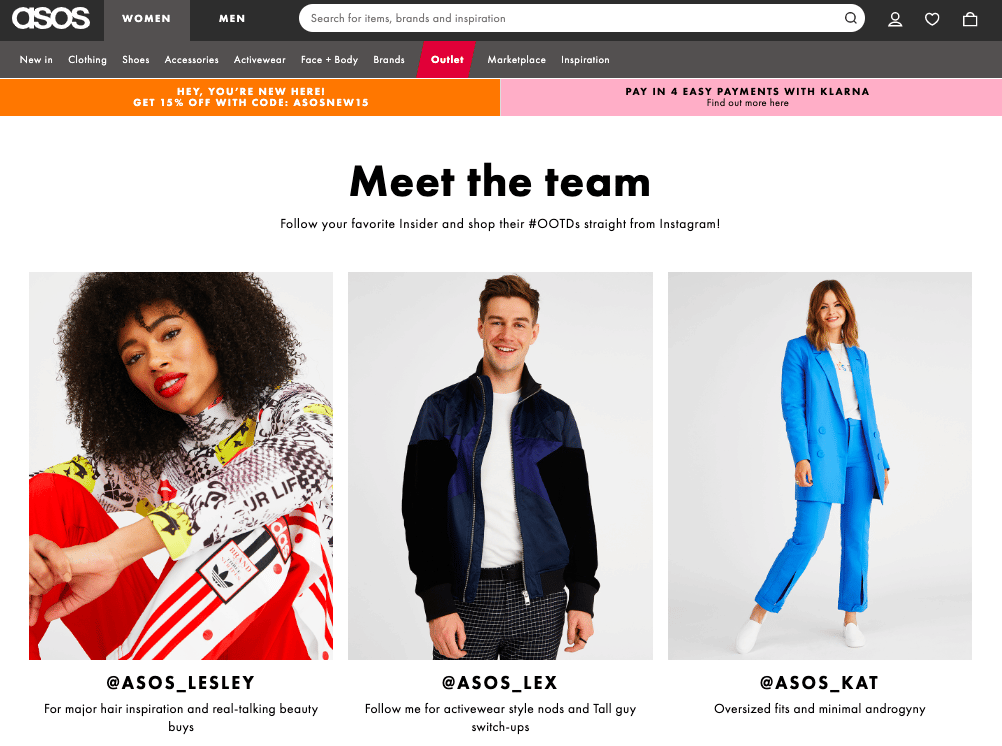
In the food industry, sponsored posts from influencers get five times more engagement than posts from the brands themselves.23 A marketing study by Tomoson found that, on average, brands reported earning $6.50 for every $1 they spent on influencer marketing.24
But before you get out your chequebook, remember: you don’t have to go for a paid collaboration. Brands like Impossible and Heura explicitly avoid it – perhaps because many other companies have seen influencer sponsorship fees rise 50% year-on-year.25 Gifting neatly circumvents that problem.
ProVeg has over 410,000 subscribers to its international B2C newsletter as well as 90,000 instagram followers and 23,000 consumers in our test community. We’d love to help support you and your product range. Send us your wishlist at [email protected].
In this next case study, we’ll see a great example of how to befriend an influencer from scratch.
Case Study: How Heura found Farida
Heura built rapport with Farida (@theegyptianplanteater) via Instagram. They started out with regular positive comments and likes on her Insta feed. This developed into a back-and-forth, and private DMs.
With good rapport established, Heura offered to send Farida some free samples of their products – with no obligation to promote them. She loved the products, and voluntarily did a series of Insta stories for her fans, raving about Heura, and showcasing the recipes she’d tried.
A little later, Farida reached a milestone, hitting her first 10k followers. She spontaneously reached out to Heura and asked if they wanted to do a product giveaway contest for her followers.
An influencer shares a giveaway opportunity with her fans.
Heura earned access to ten thousand consumers interested in plant-based products. Those fans are clamouring for a free chance to try the products that their trusted influencer was advocating.
Heura found a great match in Farida, and she became an organic brand champion.
Influencer Calum a.k.a. BLITZ is another Heura brand ambassador. There’s no #ad tag, and not even a #gifted tag – instead Calum’s become such a brand champion, he’s buying Heura products as a regular customer and voluntarily promoting them to his followers. Dreamy!
How gifting experiences breed loyalty: Heura’s ‘Rebel House’
When Huera started out, they focused on targeting an established customer base: hungry vegans. As their popularity has grown, their products have proliferated across restaurants and retailers, and they’re now focused on increasing their share in the flexitarian market.
To scale up their following, Heura once again deployed their expert influencer skills. By now, they’re well-known enough to have influencers approaching them for collaborations, rather than the other way around. When they threw the doors open for their first Rebel House event, they were inundated by eager influencers.
They invited a selection of influencers to an exclusive vacation with them at a luxury villa in Southern Spain. They didn’t pay the influencers a fee, but instead focused on offering them an incredible experience – photogenic accommodation, an elite networking opportunity, and intimate cooking classes with celebrity chefs such as the Bosh! duo.
Influencers left the trip with great memories and tons of exclusive footage and anecdotes for their followers. They returned to their home countries as dedicated brand ambassadors for Heura, and continue to voluntarily spread the word about the company’s products. For instance, @thelittlelondonvegan, who has 128k followers, posted this several weeks later:
Who wins in the iconic arena contest ‘influencer versus plant-based hot dog’? Society. Mmm.
Conclusion
By building mutually respectful relationships with influencers who are aligned with your brand’s mission, you can reach their audience and grow your following. A successful relationship will be initially be built on shared interests and some engaging back-and-forth conversations online. If you’re a good fit for each other, this can lead to an opportunity to gift the influencer some free products to try. If they love your brand, they’ll hopefully post some glowing social media content about you for free. Assuming that it generates positive engagement, your next step would be to offer a giveaway promotion for that influencer’s followers. Both you and them stand to gain from this relationship — they have exciting content for their audience, and you get access to relevant and engaged consumers.
Ultimately, if you and the influencer develop a strong partnership, you may wish to explore further collaborations like co-creating new recipes or hosting public tasting events. This ‘earned media’ can be significantly more impactful than conventional paid social-media advertising.26
If you’re looking to refine your products’ positioning, branding, and communications in order to meet the specific needs of your consumer segment, ProVeg has you covered. We have extensive knowledge of flexitarian and plant-based consumers in Europe, from general preferences to specific consumer sentiments. Depending on your requirements, ProVeg will create a customised marketing-and-communications strategy to help you reach your goals. Let’s talk: [email protected].
Looking for an expert review of your plant-based marketing strategy?
ProVeg helps food producers to develop and market plant-based products better. To optimise your plant-based marketing, check out more of our resources. If you have any questions, you can always reach us at [email protected]
References
- Nielsen Catalina Solutions, cited from Inc. (n.y.): Influencer marketing delivers 11x ROI over all other forms of digital media- Available at https://www.inc.com/bill-carmody/influencer-marketing-delivers-11x-roi-over-all-other-forms-of-digital-media.html (last accessed 21.10.2021).
- Nielsen (2012): Consumer trust in online, social and mobile advertising grows. Available at https://www.nielsen.com/us/en/insights/article/2012/consumer-trust-in-online-social-and-mobile-advertising-grows/ (last accessed 11.10.2021).
- Bughin, J; Doogan, J; Vetvik O J (2010): A new way to measure word-of-mouth marketing. McKinsey. Available at https://www.mckinsey.com/business-functions/marketing-and-sales/our-insights/a-new-way-to-measure-word-of-mouth-marketing (last accessed 11.10.2021).
- Quotation cited from Santora, J (2021):100 Influencer marketing statistics for 2021. Influencer Marketing Hub. Available at https://influencermarketinghub.com/influencer-marketing-statistics/ (last accessed 11.10.2021).
- Vegconomist (2020): Heura announces 450% growth in 2020 & is fastest growing startup in Europe. Available at https://vegconomist.com/companies-and-portraits/heura-announces-450-growth-in-2020-is-fastest-growing-startup-in-europe/ (last accessed 21.20.2021).
- Ho, S (2021): Spain’s Heura triples turnover amid pandemic shifts masses to plant-based meat. Green Queen. Available at https://www.greenqueen.com.hk/spain-heura-triples-turnover-amid-pandemic-shifts-masses-to-plant-based-meat/ (last accessed 21.20.2021).
- Lane (2020): How many vegans in the world? In the USA? (2020). Vegan Bits. Available at https://veganbits.com/vegan-demographics/(last accessed 21.10.2021).
- Smart Protein project (2021): What do consumers want: a European survey on consumer attitudes towards plant-based foods, with a focus on flexitarians. Country specific findings. Publication in November 2021.
- ProVeg (2020): European consumer survey on plant-based foods. Available at https://proveg.com/what-we-do/corporate-engagement/proveg-consumer-survey-report-download/ (last accessed 21.10.2021).
- Smart Protein project (2021): What do consumers want: a European survey on consumer attitudes towards plant-based foods, with a focus on flexitarians. Country specific findings. Publication in November 2021.
- Smart Protein project (2021): What do consumers want: a European survey on consumer attitudes towards plant-based foods, with a focus on flexitarians. Country specific findings. Publication in November 2021.
- Quotation cited from Sokolowski, T (n.y.) Impossible Foods leverages real time data for market expansion Outside Insight. Available at https://outsideinsight.com/insights/impossible-foods-leverages-real-time-data-for-market-expansion/ (last accessed 21.10.2021).
- Quotation cited from Carufel, R (2021): Why don’t influencers want to work with your brand? Here’s what they want to see from brands. Agility PR Solutions. Available at https://www.agilitypr.com/pr-news/public-relations/why-dont-influencers-want-to-work-with-your-brand-heres-what-they-want-to-see-from-brands/ (last accessed 21.10.2021).
- HypeAuditor, cited from Carufel, R (2021): Why don’t influencers want to work with your brand? Here’s what they want to see from brands. Agility PR Solutions. Available at https://www.agilitypr.com/pr-news/public-relations/why-dont-influencers-want-to-work-with-your-brand-heres-what-they-want-to-see-from-brands/ (last accessed 17.01.2022).
- Quantilope, cited from Sanchez, S (2021): Gen Z demands more diversity and inclusion from brands. Campaign US. Available at https://www.campaignlive.com/article/gen-z-demands-diversity-inclusion-brands/1705491 (last accessed 21.10.2021).
- Kantar, cited from Williams, R (2020): Gen Z relies on influencers for purchase decisions, Kantar say. Marketing Drive. Available at https://www.marketingdive.com/news/gen-z-relies-on-influencers-for-purchase-decisions-kantar-says/582890/ (last accessed 21.10.2021).
- Quotation cited from Bradley, D (n.y.): Want to be an Impossible Burger influencer? Don’t expect to get paid. PR Week. Available at https://www.prweek.com/article/1589256/want-impossible-burger-influencer-dont-expect-paid (last accessed 21.10.2021).
- Corbitt, L (n.y.): How you can build a powerful influencer marketing strategy in 2021. Available at https://www.bigcommerce.co.uk/blog/influencer-marketing/#influencer-marketing-by-the-numbers (last accessed 21.10.2021).
- Quotation cited from Carufel, R (2021): Why don’t influencers want to work with your brand? Here’s what they want to see from brands. Agility PR Solutions. Available at https://www.agilitypr.com/pr-news/public-relations/why-dont-influencers-want-to-work-with-your-brand-heres-what-they-want-to-see-from-brands/ (last accessed 21.10.2021).
- Quotation cited from Bradley, D (n.y.): Want to be an Impossible Burger influencer? Don’t expect to get paid. PR Week. Available at https://www.prweek.com/article/1589256/want-impossible-burger-influencer-dont-expect-paid (last accessed 21.10.2021).
- Zine, cited from Zine (n.y.): 57 Influencer marketing statistics you need to know in 2020. Available at https://blog.zine.co/influencer-marketing-statistics-2020/ (last accessed 21.10.2021).
- Cohen May, J (2020): The impact of influencer marketing on fashion, beauty and luxury sales. Launch Metrics. Available at https://www.launchmetrics.com/resources/blog/influencer-marketing-impact-on-sales (last accessed 21.10.2021).
- Business Collective (n.y.): How you can use influencer marketing on Instagram in 2018. Available at https://businesscollective.com/how-you-can-use-influencer-marketing-on-instagram-in-2018/ (last accessed 12.10.2021).
- Tomoson (n.y.): Influencer marketing study. Available at https://www.tomoson.com/blog/influencer-marketing-study/ (last accessed 21.10.2021).
- Rogers, C (2017): What’s the ROI of influencer marketing? Marketing Week. Available at https://www.marketingweek.com/roi-look-like-world-influencer-marketing/ (last accessed 21.10.2021).
- Nielsen Catalina Solutions, cited from Inc. (n.y.): Influencer marketing delivers 11x ROI over all other forms of digital media- Available at https://www.inc.com/bill-carmody/influencer-marketing-delivers-11x-roi-over-all-other-forms-of-digital-media.html (last accessed 21.10.2021).
